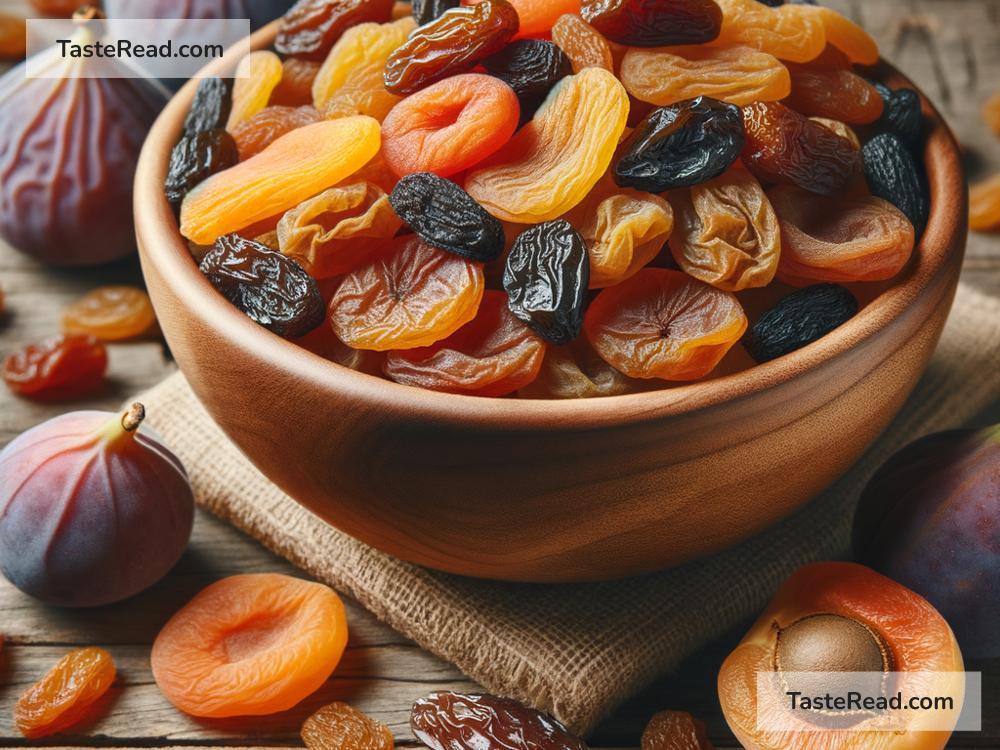The Science Behind Dried Fruit Sweetness
Dried fruit is a tasty and convenient snack that millions of people enjoy worldwide. Whether it’s raisins, apricots, mangoes, or prunes, dried fruit has a naturally sweet flavor that can satisfy almost everyone’s sweet tooth. You might wonder, though, why dried fruit seems much sweeter than fresh fruit even though no sugar is added. The answer lies in science! Let’s explore the fascinating reasons behind the sweetness of dried fruit.
What Is Dried Fruit?
To get started, let’s break down what dried fruit actually is. Dried fruit refers to fresh fruit that has had most of its water content removed, either through sun-drying, air-drying, or using a machine called a dehydrator. The drying process preserves the fruit for longer periods because it reduces moisture, which bacteria need to grow. Along with extending the shelf life, it also creates the super sweet flavor we all know and love.
The Role of Water in Fresh Fruit
Before fresh fruit is dried, it contains a lot of water. For example, a fresh grape is about 80% water! This water takes up space and helps dilute the sugar inside the fruit, meaning the sweetness is more subtle. The natural sugars in fresh fruit are spread throughout the watery juice.
When you bite into something like a peach, the water works as a buffer that balances the sweet taste. Water doesn’t taste sweet on its own, but it neutralizes the flavor and reduces the intensity of the sugar. However, when you remove that water in the drying process, the sugar becomes much more concentrated.
Concentration Equals Intensity
Now, here’s the key scientific explanation behind dried fruit sweetness: concentration. When you dry fruit, you’re shrinking its size by removing its water content, but none of the sugar disappears. Imagine a fresh apricot has 10 grams of sugar and weighs 100 grams. After drying, that same apricot might only weigh 25 grams, but it still has the same 10 grams of sugar inside. With less water and a smaller size, the sugar concentration rises dramatically, making the fruit taste much sweeter.
Think of it like this: if you stirred a spoonful of sugar into a glass of water, the drink would taste mildly sweet. But if you removed half of the water, the mixture would taste much sweeter because the sugar is now packed into less liquid. Dried fruit works the same way.
The Science of Natural Sugars
The sweetness in dried fruit comes from natural sugars. These sugars are primarily fructose and glucose, which are the same sugars found in fresh fruit. Fructose is a simple sugar that’s naturally very sweet and is a major component of dried fruit. Glucose is also sweet but slightly less so than fructose. Together, these sugars give dried fruit its candy-like taste.
However, unlike manufactured candy made with refined sugar, dried fruit contains the fiber, vitamins, and minerals found in the original fresh fruit. That means dried fruit is generally a healthier option because the fiber slows down how quickly your body absorbs the sugar. This helps prevent spikes in blood sugar levels. But because dried fruit is so sweet, it’s still important to eat it in moderation.
Why Texture Matters
Besides the concentrated sugar, the texture of dried fruit contributes to its sweetness. Dried fruit is chewy and sticky, which prolongs the time it spends on your taste buds. Fresh fruit, with all its water, is juicier and typically eaten more quickly. The slower chewing process with dried fruit means you experience the sweetness for longer, making it feel even more intense.
Additionally, dried fruit often feels “dense” because of its compact structure. This density enhances the sensation of sweetness because there’s more sugary material packed into each bite.
Added Sugar vs. Natural Sugar
It’s important to mention that not all dried fruit is created equal. Some commercially dried fruits, like candied pineapple or dried cranberries, are often coated in added sugar during processing to make them even sweeter. This added sugar can increase calories significantly and may outweigh the health benefits of the fruit itself.
On the other hand, naturally dried fruits, like unsweetened raisins or prunes, don’t contain any added sugar. They only rely on the natural sugars that were already in the fresh fruit. When buying dried fruit, always read the label to know if sugar has been added or not. Look for options labeled “unsweetened” if you want the purest experience of natural sweetness.
The Takeaway: Why Dried Fruit Is So Sweet
In summary, dried fruit tastes sweeter than fresh fruit because of water loss during the drying process. Removing water concentrates the sugars, making them taste more intense. Fructose and glucose, the natural sugars in fruit, become more powerful when packed into the smaller size of dried fruit. The chewy texture also amplifies the sweet sensation because it lingers on your taste buds.
So next time you enjoy a handful of dried fruit, you’ll know why it tastes so wonderfully sweet—and why it’s so satisfying as a snack. Just remember to savor it responsibly, as even natural sugar can add up if you eat too much. Science is amazing, isn’t it? It helps explain even the simplest pleasures in life, like enjoying a few sweet raisins.


